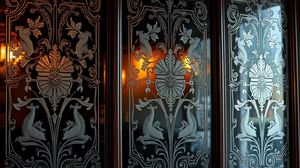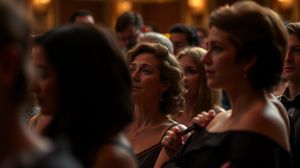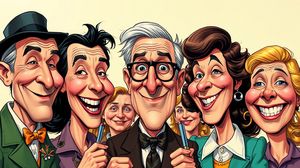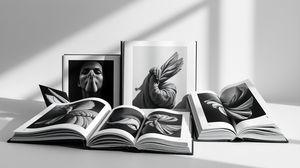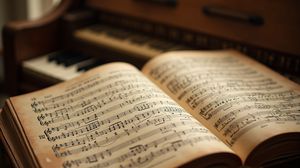
BBC Broadcasting House is a landmark building in London and the global headquarters of the British Broadcasting Corporation. It is situated in Marylebone, an area known for its elegant and historic architecture. Broadcasting House serves as a central nerve center for BBC radio, television, and digital programming. The building is a crucial part of London's cultural and media landscape, symbolizing the public service ethos and international reach of the BBC.
The original building was completed in 1932 and is a fine example of Art Deco architecture. This iconic structure was designed by George Val Myer and strongly reflects the architectural trends of its time. It was one of the first buildings in London specifically constructed for broadcasting purposes, making it a pioneering space in the history of media infrastructure.
A noteworthy aspect of Broadcasting House is its striking facade, particularly the sculpture above the entrance called 'Prospero and Ariel' by Eric Gill. These figures are taken from William Shakespeare's "The Tempest" and represent the harnessing of the airwaves, perfectly symbolizing the building's purpose and the innovative spirit of broadcasting.
In 2013, Broadcasting House underwent a significant renovation, which involved merging the original building with an adjacent modern extension known as the John Peel Wing. This integration transformed the site into one of the world's largest live broadcast centers, showcasing an impressive combination of historical and cutting-edge architectural design.
Another fascinating feature of the building is its unique circular structure, designed to accommodate many studios while minimizing sound interference. This design foresight has been crucial for creating a premier environment for producing world-class audio content that the BBC is celebrated for.
Visitors to Broadcasting House can also appreciate the beautifully designed Radio Theatre, located within. This venue has hosted a variety of live performances and radio recordings, showcasing artists and programs that the BBC is renowned for backing. It acts as an intimate space that brings performers and audiences close together in the spirit of the golden age of radio.
One oddity worth noting is the acoustically perfect "Whispering Gallery" located in the main reception area. This semi-circular room allows you to hear a whisper clearly from the other side, showcasing how the building combines functional needs with quirky, enjoyable elements.
With its vibrant history and continuing role in global media production, BBC Broadcasting House remains an iconic attraction for anyone interested in the history and present of broadcasting technology and culture. It also holds a place in the public imagination as the birthplace of many beloved programs and memorable broadcasts.

Making the Most of Your Visit:
When you're visiting BBC Broadcasting House, don't miss out on seeing the remarkable 'Prospero and Ariel' sculpture above the entrance. It's fascinating not just for its artistic merit but also for the occasional controversy surrounding its creator, Eric Gill. Knowing a bit about its backstory adds depth to the experience.
Check if there are any BBC Radio Theatre events or live recordings happening during your visit. These events offer a unique opportunity to see world-class performances and get a glimpse into the production side of beloved BBC shows in an intimate setting.
Pay close attention to the architecture itself while you're there. The melding of Art Deco with modern elements in the renovated sections is stunning. Particularly, note the transition where the older building meets the modern John Peel Wing—a great example of blending the old with the new.
Take a moment to enjoy the Whispering Gallery in the main reception area. It's one of those quirky architectural features that doesn't get much mention but can be quite fun to experience firsthand. Simply stand at one end and have a friend at the other—you'll be amazed at how sound travels.
If you're interested in the history of broadcasting, try to join a guided tour of the facility if available. These provide not just access but context to the studios and better understanding of this iconic building's role in shaping global media.

Visiting Times & Costs:
BBC Broadcasting House offers some limited opportunities for public access. It hosts guided tours which allow visitors to explore various parts of the building, including the BBC Radio Theatre and, at times, other working studios. These tours provide a deep insight into the operations and history of the BBC.
Opening Hours:
- Guided tours are typically available on specific days, often subject to scheduling changes due to production requirements. It is advisable to check the availability of tours in advance.
Cost:
- There is an entrance fee for guided tours, generally determined by the type of tour and any special access it includes. Rates can vary, so checking for the latest pricing details when booking is recommended.
Accessibility:
- BBC Broadcasting House aims to be accessible to all visitors. There are facilities to assist those with mobility impairments, including step-free access and elevators. However, certain areas potentially may have restricted access depending on the tour routing and operational factors.
- Booking in advance may allow for special accommodations to be arranged if required.

Address & Map:

Nearby:






